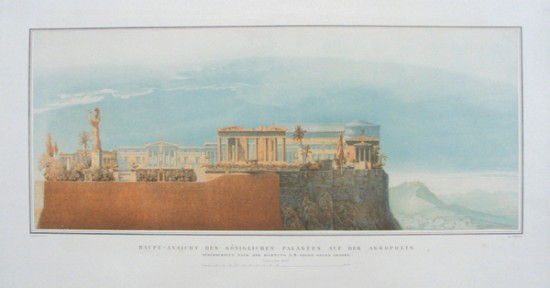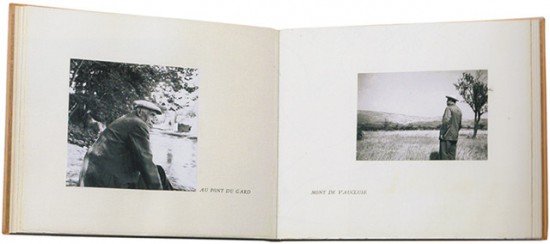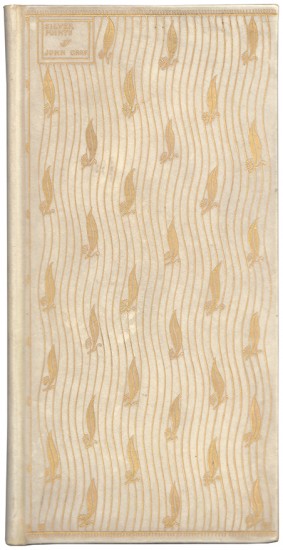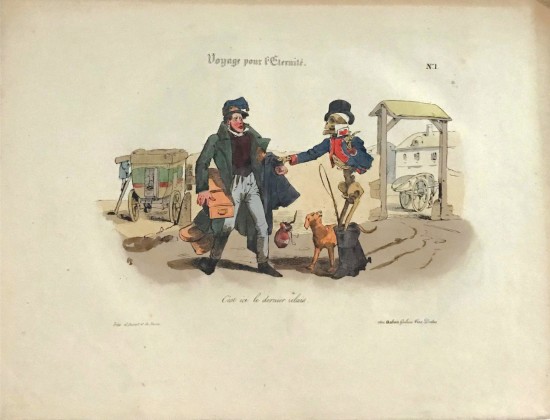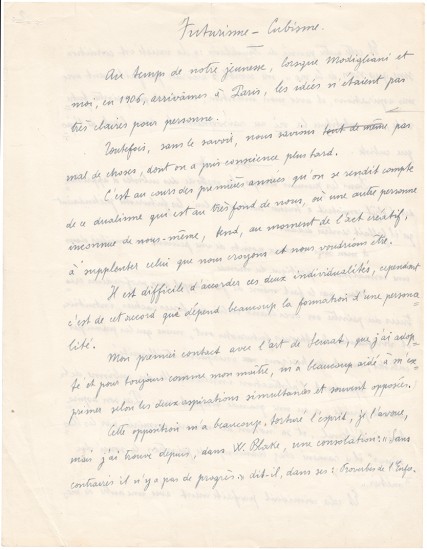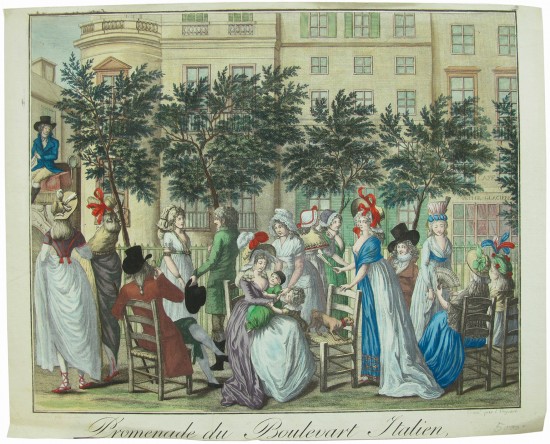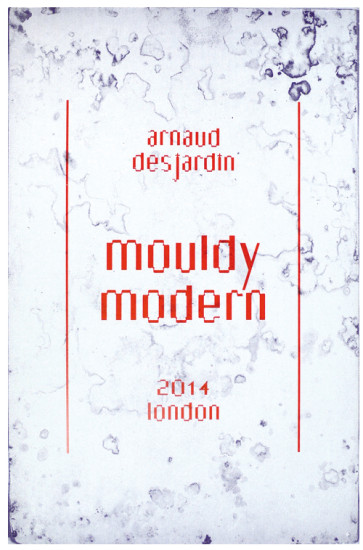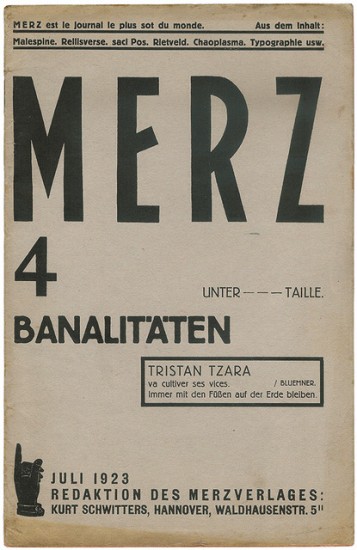Entwurf zu einem Königspalast auf der Akropolis zu Athen
Schinkel, Karl Friedrich
Berlin. Verlag von Ernst & Korn. 1878
Sold
Very rare collection of Schinkel's fantastic 'Higher Architecture' designs for King Otto of Greece's palace on the Acropolis.
Commissioned by King Otto of Greece (son of Ludwig I of Bavaria) in 1834, Schinkel's plans for the Acropolis included the construction of a palace at the unused eastern end of the plateau, the reconstruction of the enormous statue Athena Promachos - taken to Constantinople in c.450 AD and destroyed by a Christian mob in 1203 - which had stood between the Propylaea and the Parthenon. Schinkel proposed the clearing of the site of post-antique buildings while retaining the Periclean monuments, modifying the site with landscaping and refining the whole into a testament stressing the continuity of Greece's Classical past to its newly won independence (Greece wass recognised internationally as an independent nation in 1832). Contemporary economic conditions after Greece's struggle for independence, rather than the apathy which wrecked Schinkel's other late monumental project at Orianda, ensured that the proposed project was never undertaken.
These designs were first published in the Werke der höheren Baukunst (1840 - 1842), published largely posthumously but undertaken with Schinkel's initial supervision (he died in 1841). The designs were published separately for the first time in 1862 and, as here, in 1878. The separate publication of the designs is an indication of the continued importance of Schinkel as an architect and his inspired vision for this, albeit unrealised, project.
[Not in Berlin; not in Millard; not in Brunet; not in Weinreb].
Commissioned by King Otto of Greece (son of Ludwig I of Bavaria) in 1834, Schinkel's plans for the Acropolis included the construction of a palace at the unused eastern end of the plateau, the reconstruction of the enormous statue Athena Promachos - taken to Constantinople in c.450 AD and destroyed by a Christian mob in 1203 - which had stood between the Propylaea and the Parthenon. Schinkel proposed the clearing of the site of post-antique buildings while retaining the Periclean monuments, modifying the site with landscaping and refining the whole into a testament stressing the continuity of Greece's Classical past to its newly won independence (Greece wass recognised internationally as an independent nation in 1832). Contemporary economic conditions after Greece's struggle for independence, rather than the apathy which wrecked Schinkel's other late monumental project at Orianda, ensured that the proposed project was never undertaken.
These designs were first published in the Werke der höheren Baukunst (1840 - 1842), published largely posthumously but undertaken with Schinkel's initial supervision (he died in 1841). The designs were published separately for the first time in 1862 and, as here, in 1878. The separate publication of the designs is an indication of the continued importance of Schinkel as an architect and his inspired vision for this, albeit unrealised, project.
[Not in Berlin; not in Millard; not in Brunet; not in Weinreb].
Large folio. (c.950 x 675 mm). Leaf with printed title and 10 large lithograph plates, two in magnificent colour (tipped-on to larger sheets), 8 tinted or in monochrome (including tinted ground plan of the palace with separate printed key plate) after designs by Schinkel. Plates printed on thick paper, sheet size: c.865 x 610 mm (or the reverse). Loose as issued in later portfolio, original blue paper wrappers retained, front wrapper mounted to front board of portfolio.
#40095
